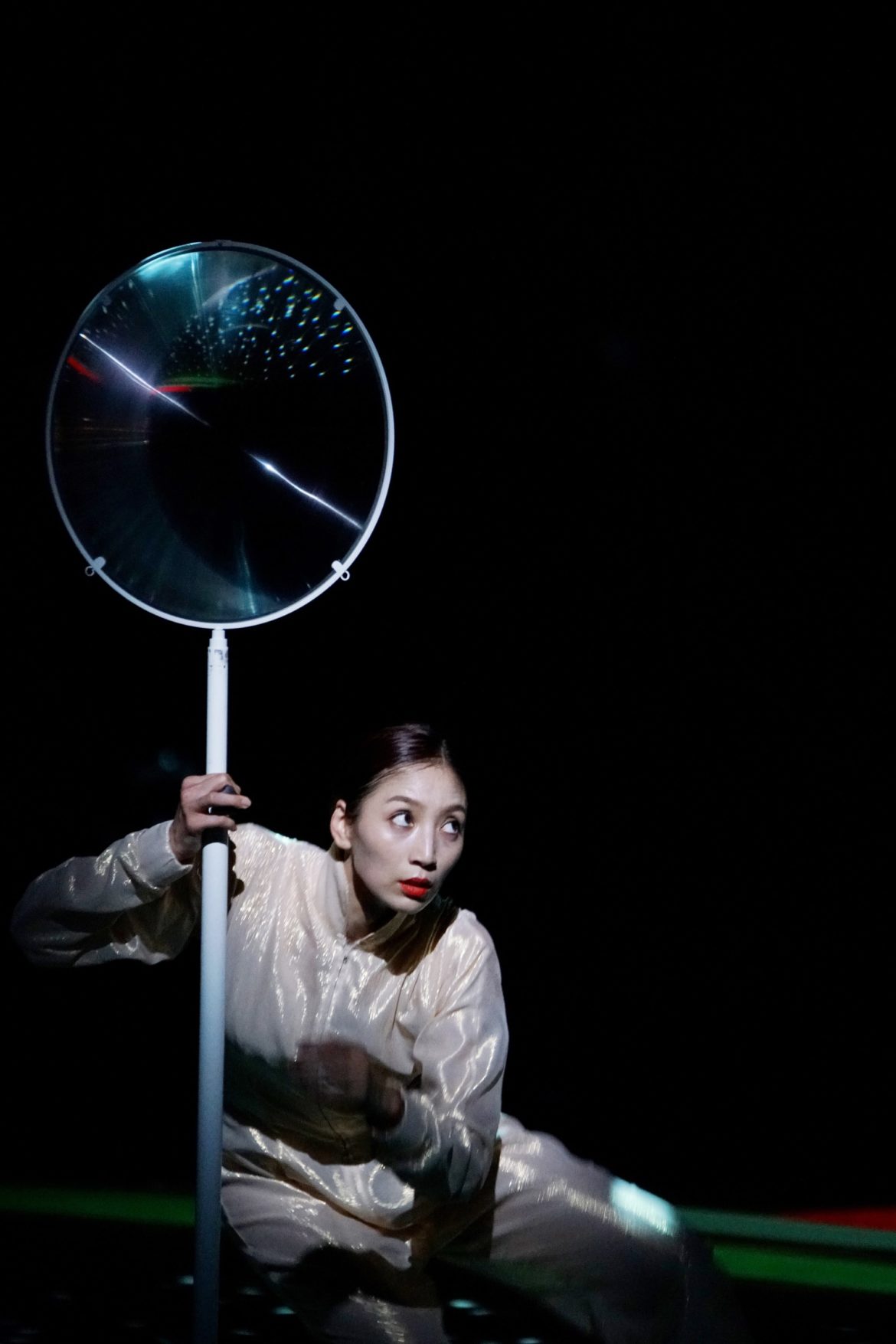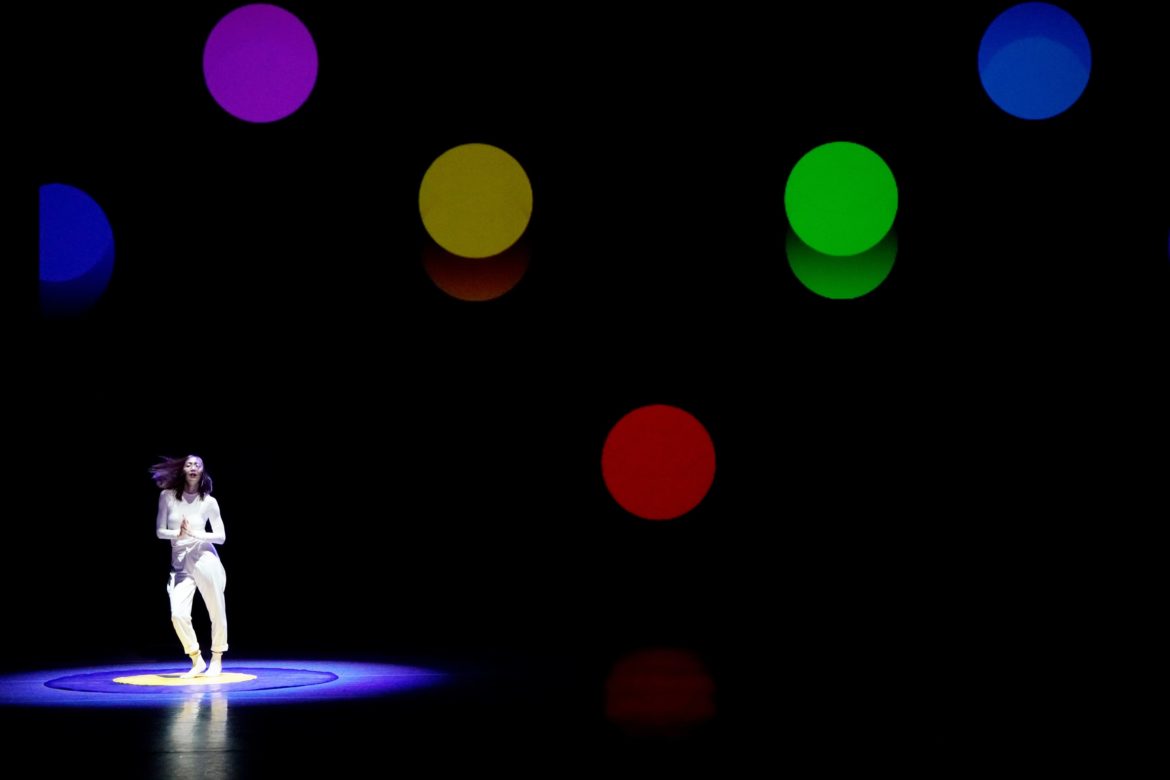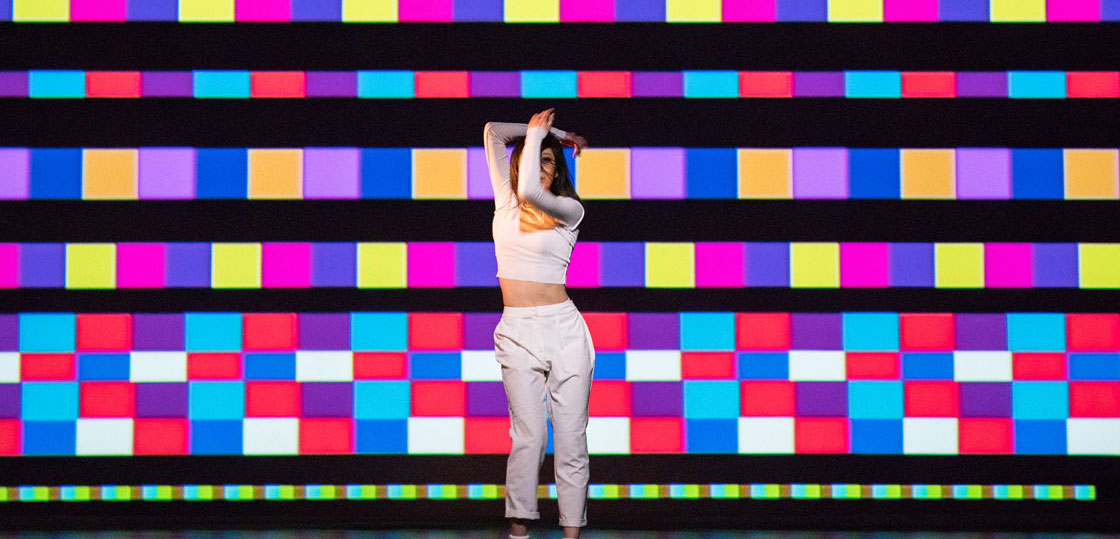Jinyeob Cha, Korean dancer, director and famously the choreographer of the 2018 PyeongChang Winter Olympics ceremonies returns to London to present Riverrun at the Festival of Korean Dance being held at The Place until 16 May.
We interviewed Jinyeob for our podcast show about her training at the London Contemporary Dance School, her choreographic inspirations and becoming a celebrity judge on the country’s version of Dancing with the Stars.
Listen to our podcast interview with or read about Jinyeob’s incredible career below:
When did you first start dancing and what was it like growing up in Korea and learning to dance?
I started dancing when I was seven, but it wasn’t a professional craft. When I first started, it was a hobby. When I was nine years old I started rhythmic gymnastics. In order to do rhythm gymnastics, I had to learn the basics of ballet. My ballet teacher suggested I take professional lessons.
So I started taking professional lessons and then I decided to become a dancer. In my teenage years, I started wondering about the meaning of life and asking myself philosophical questions. That’s when I became interested in contemporary dance and I transferred from ballet to contemporary dance – and I’ve been dancing ever since.
What was it about contemporary dance that made you make that change?
As you know, ballet is very it is very formatted. It has its form, it’s about passionate dance, and it’s about making a perfect move through repetitive practice and practice. When I was first introduced to contemporary dance, I was intrigued by its freedom; freedom of expression, being able to portray my unique personalities and mix all of the dance instead of becoming another pretty ballerina.

You studied at the London Contemporary Dance School; tell us about the difference between your experience learning contemporary dance here in London and your experience in Seoul.
When I was in Korea, I was able to learn the different techniques, perfecting my body and really becoming a dancer and performer. It was more about the techniques that already tested. It was the technique that was already formulated within the contemporary dance field.
When I went to London, I was worked with different choreographers and was able to discover new techniques that would belong to me. It was my own experience and my own expression instead of being something that was already formulated.
Contemporary dance was born in the Western culture, so I had to go to the Western culture and really learn more about where it was originally born.
While in London you danced with Hofesh Shechter, what was it like for you as a dancer?
I was actually very lucky because the very first show that I went to see when I arrived in London was Hofesh’s show. I watched the show and my first impression was ‘this is why I came to London!’ I was very impressed with his work and really had a desire to work with him at one point of my life and then the London Contemporary Dance School invited him as a choreographer and I very naturally had the opportunity to work with him. Then, later on, he invited me to work with his company and it just transitioned very naturally. I was very lucky, I have to say.
What did it feel like to perform Hofesh’s work?
The first work that we got to do together was a piece that hadn’t existed before, so I was lucky that I wasn’t replacing an amazing dancer who did things perfectly. It was quite challenging when I first started doing the show. It was a very unique and special moment for me. It wasn’t special because it was difficult or overwhelming or stressful. It was because I wanted to do it really well.
It was a very enjoyable challenge. It was a challenge where we got to meet friends, we got to meet dancers, and it was a good challenge and not a stressful challenge. And Hofesh’s Israeli background was easy for me to understand and easy to connect with some of his artistic philosophies that he portrays in his choreography. With me also being an Asian woman, once I was able to dance his choreography, I was able to really connect with his work. So I felt like I was finally on the right choreography, I was wearing the right costume, everything was a fit for me.

How would you describe your choreographic language?
I am still a work in progress. If I define my language, it’s still a work in progress and it changes every time I do a new work. But I will say that the way I work is instead of focusing too much on myself, I collaborate with the dancers I work with, with the choreographers I work with and try to discover what they have to bring to the table.
I try to discover and find out what they have to say and what the benefits that they have and then find out on how we can find or create new works. Instead of defining my own language, I try to bring in the uniqueness of the dancers that I work with and what they have and portray that into the work that we do together.
Tell us about Riverrun…
It’s a work with visual artist Vakki. She’s a visual artist in Korea and because she’s a visual artist we have been using kinetic art in our work – the videos and performances are very strong and very visual.
In this work, we focus on how the videos and how the movement of the videos and the movement of the kinetic arts work with my own movement; and instead of being the background, they become part of the choreography and the kinetic art movement is also part of the whole choreography.
What does bringing your work to the Festival of Korean Dance mean to you?
I left London in 2008, so going back to London after 10 years with this show is going to be rather reflective and very exciting by itself.
Bringing Riverrun – when I am in a more stable level in my career, a more realised choreographer, director and dancer – it’s very meaningful to bring a show that I can call ‘my work’ to London. It’s quite overwhelming at the same time; there is a lot of anxiousness as well because of that.
Tell me about becoming a judge on the Korean version of Dancing with the Stars?
It was an opportunity to realize the power of broadcast media. I had been dancing for 10-15 years before the public had actually recognized me. After that show, I was in the top internet searches on the Korean portal. In one day, after one single video experience, people now recognize me on the street. I was really amazed by the power of the media.

How is contemporary dance perceived in Korea?
In terms of quality or the level of our dancers and our artists, we are growing very fast and we are almost on a world-class level. A lot of Korean dancers are going overseas and doing major performances. I think that we have grown into a very high class of performers, artists, and creators.
Having said that, the general public – if you ask a section of the general public – it is true that through this TV Show, a lot of the general public have been introduced to contemporary dance and to what it is, what this genre is. The dancers on the show fans and do and they are becoming more popular.
Before the show I used to have a bias against the generalisation of fine arts. The show is making it popular culture. But at the same time for people who don’t know a lot about the fine arts it gives them an opportunity to experience it and appreciate it. This has made me realise that it is very important as well.
I was able to think about the things that I can do as an artist to let more people know and appreciate the work we do. Before I used to do only theatre and shows, but now I’m doing more site-specific shows and collaborating with different artists in different fields so that we can get closer to the general public.
Tell us about choreographing for winter Olympics?
I thought that I had experienced a lot in this life until I experienced the Winter Olympics! It was the largest, the longest, and the greatest in scale. The scale was large, the number of people that we had to work with was large, it was so different to anything I’d done before.
The conflicts that we had and the challenges that we had to face was just greater than anything that I had experienced before that. It was a two year and a half long project!
It was two and a half years of working every day, it was a long project and it was very cold! There were so many so many different challenges that we had to work through every single day.
It was also a very good opportunity for me to reflect on the type of artist that I am or the type of person that I am and how I’m in Korea in these situations.
You know If you ask me if I was offered another opportunity like this, I would probably turn it down, I wouldn’t do it again. But having said this, at the same time, if I was offered the same opportunity, I would do it again!

What advice would you give other female choreographers in Korea?
Women have been always the center of my work and world. It’s more because I am always focusing on myself – what person I am? What do I have to communicate to the world? In this world, and society? I was focusing on what I am and where I come from.
Therefore, I was looking into what it means to be a woman in this world. I work and deeply focus on the past. Even focusing on I was born. That has really helped me find my voice and I’ve become strong as a person and have a concrete voice that’s a strong, firm voice within the work that I do.
My advice to other dancers is to focus on who they are, where they come from, what their roots or their foundation and then give it a strong voice to be portrayed.
Festival of Korean Dance, is being held in London at The Place, until 16 May.


